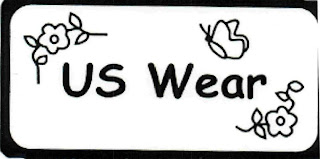The parties filed cross-motions for summary judgment in this consolidated opposition to registration of two marks --
GRAND AMERICAN EXPRESS and the mark shown below -- for "transportation services, namely, transporting passengers by means of a 19th century replica train." American Express claimed likelihood of confusion with and likely dilution of its family of
AMERICAN EXPRESS marks. Applicant Gilad moved to add the affirmative defense of "noncommercial use" with regard to the dilution claim, but not until after moving for summary judgment on that issue.
American Express Marketing & Development Corp. v. Gilad Development Corporation, 94 USPQ2d 1294 (TTAB 2010) [precedential].
 Timing of Applicant's Motion:
Timing of Applicant's Motion: American Express complained that Gilad's summary judgment motion was improper because it was based on a then unpleaded defense. The Board noted that a party may
simultaneously move to add an issue and move for summary judgment on that issue. However, in this case, in the interest of judicial economy, it decided to first hear the motion for leave and then the summary judgment motion. In the future, however, the Board will deny such a summary judgment motion unless it is "accompanied by an appropriate motion to amend or is withdrawn and refiled with such a motion to amend."
Commercial Use Defense: Applicant contended that it chose its marks as an allusion to an 1855 lithograph by Currier and Ives titled American "Express" Train and the nineteenth century history and era it evokes. Therefore, Applicant argued that its marks, "in addition to their intended service mark usage, serve as a form of artistic expression."

The Board first considered whether to grant Applicant's motion to amend, and found the only significant question to be whether the amendment would be futile.
Applicant Gilad urged that the Trademark Dilution Revision Act of 2006 (TDRA) expressly includes "noncommercial use" as a defense to a dilution claim. Opposer maintained that the defense is unavailable in a Board proceeding, where only registrability is at issue and not whether Applicant has the right to use its mark. Gilad countered by arguing that there is no reason why use of a mark cannot be both "use in commerce" for purposes of registrability and "noncommercial" for dilution purposes.
The Board observed that "the applicability of the 'noncommercial use' exception as an affirmative defense to a dilution claim is an issue of first impression for the Board." It concluded that the defense is not available.
First, the Board reasoned, the definition of "service mark" precludes the applicability of the "noncommercial use" defense in a Board proceeding. In order to obtain registrations, Applicant Gilad is required to demonstrate use of its marks in commerce as service marks, and thus cannot claim that the use is noncommercial.
Second, the Board agreed with Professor McCarthy that the mere use of another's famous mark
as a mark for its own goods or services, whether commercial or not, disqualifies it from invoking the "noncommercial use" exception.
Moreover, even if the "noncommercial use" exception did apply here, Applicant's use or intended use of its marks would not qualify as noncommercial. "'Noncommercial use' has been referred to as constitutionally protected speech that consists of parody, satire, editorial and other forms of expression that are not part of a commercial transaction." Applicant's use does not fall into any of those categories.
And so the Board denied Applicant's motion for leave to amend on the ground that the amendment would be futile.
Opposer's Summary Judgment Motion: The Board wasted little time in denying American Express's summary judgment motion. As to the Section 2(d) claim, it found that genuine issues of material fact exist as to the similarity between the marks and the relatedness of the goods. As to the dilution claim, disputed factual issues involve "whether the marks evoke similar commercial impressions so that registration of applicant's marks would impair the alleged distinctiveness of opposer's pleaded marks."
TTABlog comment: I think the Board should have granted summary judgment
sua sponte against American Express on the dilution issue, because the marks are too dissimilar.
Text Copyright John L. Welch 2010.













































